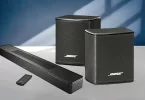Professional gamers and even video editors often look for a reliable CPU. When we talk about a reliable processor, we cannot forget the core i9-12900K. That’s because the Intel Core i9-5900K is a powerful processor for gaming and other intensive applications.
It is an 8-core, 16-thread unlocked CPU featuring Thermal Velocity Boost technology, allowing it to dynamically boost up to 5GHz on one or more cores.
You need a top-rated processor to get the best out of this processor. In this blog post, we will be highlighting the best motherboard for intel Core i9-12900K. So, let us get into it!
| Best Motherboards for Intel Core i9-12900K | Latest Price |
| 1: MSI MPG Z690 Carbon Wi-Fi | View on Amazon |
| 2: ASUS ROG Maximus Z690 Hero | View on Amazon |
| 3: ASUS ROG Strix Z690-F Gaming | View on Amazon |
| 4: MSI Pro Z690-A | View on Amazon |
| 5: ASUS PRIME Z690-A | View on Amazon |
| 6: Gigabyte Z690 AORUS Master | View on Amazon |
1: MSI MPG Z690 Carbon Wi-Fi
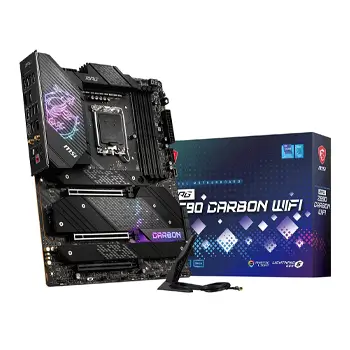

The MSI MPG Z690 Carbon Wi-Fi is a motherboard designed for use with Intel Core i9 processors, including the Core i9-10900K and Core i9-11900K. It is part of the MPG (Gaming) series of motherboards from MSI and is based on the Z690 chipset, which supports the 11th-generation Intel Core processors.
The MPG Z690 Carbon Wi-Fi features support for DDR4 memory, up to 3200 MHz, and has four DIMM slots for a maximum capacity of 128GB.
- Storage Option
In addition, it has a total of three PCI-Express x16 slots, two of which support PCI-Express 4.0 and one that supports PCI-Express 3.0. The motherboard also has two M.2 slots for NVMe SSDs and six SATA 6Gbps ports for storage.
- Connectivity and Audio Features of the Motherboard
In terms of connectivity, the MPG Z690 Carbon Wi-Fi has an integrated Wi-Fi 6 module and supports Bluetooth 5.2. It also has a 2.5 Gigabit Ethernet port and a number of USB ports, including USB 3.2 Gen 2 and USB 3.2 Gen 1. The motherboard also has a number of audio features, including support for Nahimic audio software and a Creative Sound Blaster audio processor.
Overall, the MSI MPG Z690 Carbon Wi-Fi is a high-performance motherboard that is suitable for use with Intel Core i9 processors, including the Core i9-11900K, and offers a range of features for gaming and other demanding applications.
Pros
- High-end performance capabilities
- Supports latest Intel processors and DDR5 memory
- Built-in Wi-Fi for wireless connectivity
- Multiple PCIe slots for expansion
- Advanced cooling options
- High-speed storage support (M.2, SATA)
- RGB lighting for customization
- Comprehensive connectivity options
Cons
- Expensive
- Limited availability
- Potential BIOS updates needed
- Reported software compatibility issues
- Design may not appeal to everyone
2: ASUS ROG Maximus Z690 Hero
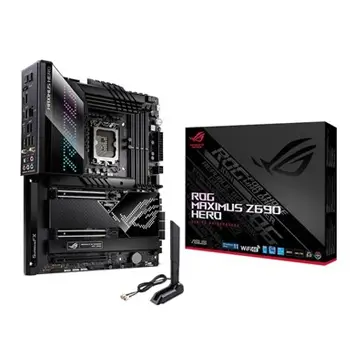

The Maximus Z690 Hero is an ATX-sized motherboard, which will fit most standard-sized PC cases. It features a 14+2 power stage design and active cooling for the VRM (voltage regulator module), which helps to ensure stable power delivery to the processor. It also has support for DDR4 RAM up to 5100 MHz and has four DIMM slots for installing memory.
- Connectivity and Audio Features of the Motherboard
In terms of connectivity, the Maximus Z690 Hero has a range of options. It has two Thunderbolt 4 ports, as well as USB 3.2 Gen 2 and Gen 1 ports, and a 2.5 Gb Ethernet port for fast networking. It also has Wi-Fi 6 support and Bluetooth 5.2 for wireless connectivity.
The Maximus Z690 Hero also has a number of features aimed at overclocking and customization. For example, it has a BIOS Flashback feature that allows you to update the BIOS without a processor installed, and it also has an AI Overclocking feature that uses machine learning to optimize system performance.
In addition, it also has a ROG DIMM.2 module that allows you to install additional M.2 SSDs in a vertically-mounted configuration.
Overall, the ASUS ROG Maximus Z690 Hero is a high-performance motherboard that is well-suited for gaming and enthusiast-level PCs. In addition, it offers a range of features and connectivity options, as well as support for advanced overclocking and customization.
Pros
- High-end performance capabilities
- Supports latest Intel processors and DDR5 memory
- Advanced power delivery system for stable overclocking
- Robust cooling solutions
- Premium audio and networking features
- Multiple PCIe slots for expansion
- High-speed storage support
- RGB lighting and customizable aesthetics
- Comprehensive connectivity options
Cons
- Expensive
- Limited availability
- Potential BIOS updates needed
- Reported software compatibility issues
- Design may not appeal to everyone’s taste
3: ASUS ROG Strix Z690-F Gaming
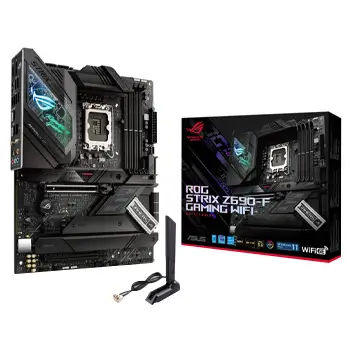

The ASUS ROG Strix Z690-F Gaming Motherboard is a feature-packed motherboard that offers plenty of performance for gamers and enthusiasts alike. With its Intel LGA 1200 socket, support for up to 128GB of DDR4 RAM, and USB 3.2 Gen 2 ports, the Strix Z690-F Gaming Motherboard has everything you need to build a powerful gaming rig.
In addition, this motherboard also features Wi-Fi 6 802.11ax, Bluetooth 5.1, SupremeFX S1220 Audio Codec, and Gigabit ethernet connectivity, making it ready for extreme gaming and multimedia entertainment experiences.
Moreover, with its integrated RGB lighting and Aura Sync technology, users can customize the look of their system to match their style and mood. Last but not least, the Strix Z690-F Gaming Motherboard includes support for ASUS’s exclusive AI Overclocking.
Pros
- High-quality gaming performance
- Supports latest Intel processors and DDR5 memory
- Advanced power delivery and cooling solutions
- Premium audio and networking features
- Multiple PCIe slots for expansion
- High-speed storage support
- RGB lighting and customizable aesthetics
- Comprehensive connectivity options
Cons
- Relatively expensive
- Limited availability
- Potential need for BIOS updates
- Reported software compatibility issues
- Design may not appeal to everyone’s taste
4: MSI Pro Z690-A
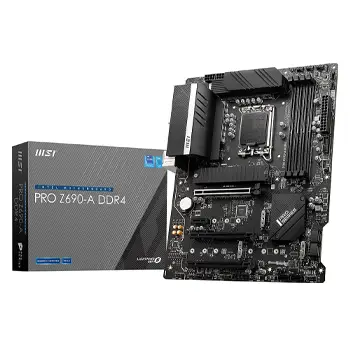

The MSI Pro Z690-A also offers a wide variety of connectivity options. It comes with two USB 3.2 Gen 2 Type-A ports, four USB 3.2 Gen 1 Type-A ports, one USB 3.2 Gen 2 Type-C port, four SATA3 ports, plus four M.2 slots for SSDs, and two Gigabit Ethernet ports.
Further, it also has an inbuilt Wi-Fi 6 module for wireless connectivity. Audio is also taken care of via a Realtek ALC1220 audio codec, a pair of 5W amplifiers, and gold-plated audio jacks for your headset or speakers.
However, it offers both HDMI 2.0 and DisplayPort 1.4 ports for visuals. Finally, the motherboard supports a maximum of 128GB DDR4 memory running at a speed of up to 4800MHz. All these features make the MSI Pro Z690-A an ideal choice for a high-end gaming PC or workstation.
Pros
- Reliable performance for mainstream use
- Supports latest Intel processors and DDR5 memory
- Multiple PCIe slots for expansion
- High-speed storage support
- Affordable price compared to high-end models
- Comprehensive connectivity options
Cons
- Limited overclocking capabilities
- Lacks advanced features of higher-end motherboards
- Basic and less visually appealing design
- Potential need for BIOS updates for compatibility
5: ASUS PRIME Z690-A
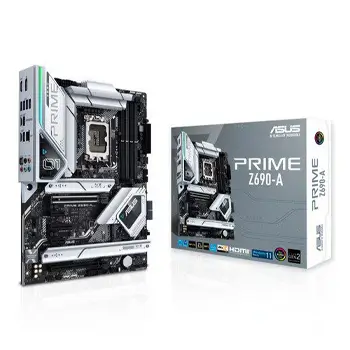

The ASUS Prime Z690-A is a powerful motherboard with support for the latest 10th Gen Intel Core processors. It offers features such as DDR4 Memory and USB 3.2 Gen 2×2 ports, making it ready for fast performance and multithreaded workloads.
Further, the board also has compatibility with ASUS OptiMem memory trace layout design to ensure stable memory overclocking and four M.2 slots for optimizing storage speeds.
Moreover, the board comes equipped with an intuitive BIOS setup that makes it easy to configure your system settings according to your needs. With its robust design and advanced features, the ASUS Prime Z690-A is an excellent choice for anyone looking to build a reliable gaming or workstation PC.
Pros
- Solid performance for mainstream use
- Supports latest Intel processors and DDR5 memory
- Advanced power delivery system
- Multiple PCIe slots for expansion
- High-speed storage support
- Premium audio and networking features
- Comprehensive connectivity options
- Robust BIOS and software features
Cons
- Limited overclocking capabilities compared to higher-end models
- Basic and less visually appealing design
- Limited availability in some regions
- Potential need for BIOS updates for compatibility
6: Gigabyte Z690 AORUS Master
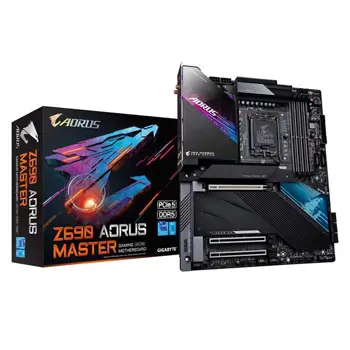

The Gigabyte Z690 AORUS Master is a great option for anyone looking to build a powerful gaming PC. This motherboard comes with an ample array of features and an impressive design. It supports the latest Intel processors, up to 128GB of DDR4 memory, and multiple M.2 slots for fast storage.
Moreover, the Z690 AORUS Master also has plenty of ports and slots, including four USB Type-A, two USB Type-C, three PCIe 4.0 x16 slots, and dual Ultra M.2 connectors. It even includes Wi-Fi 6 support for fast online gaming speeds.
Further, the onboard RGB lighting adds a splash of color to any build, while the reinforced backplate and smart fan headers offer better cooling and stability.
Overall, the Gigabyte Z690 AORUS Master provides an outstanding combination of features, performance, and style for great value. This motherboard is worth considering if you’re looking to build your next gaming rig.
Pros
- Exceptional high-end performance
- Supports latest Intel processors and DDR5 memory
- Advanced power delivery system for overclocking
- Robust cooling solutions
- Multiple PCIe slots for expansion
- High-speed storage support
- Premium audio and networking features
- RGB lighting and customizable aesthetics
- Comprehensive connectivity options
Cons
- Relatively expensive
- Limited availability in some regions
- Reported minor software compatibility issues
- Design may not appeal to everyone’s taste
What to Look for in a motherboard before buying?
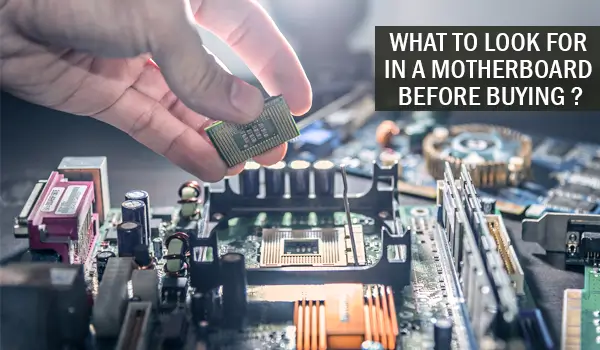

How to Choose the Best Motherboard for Ryzen 9 5900x – Buying Guide!
We hope that you have found the best motherboard for Ryzen 9 5900X. However, if you aren’t sure which factors to look for in a motherboard, here is a brief buying guide.
i): Form Factor
When shopping for a motherboard, it is important to consider the form factor of the motherboard. The form factor refers to the size and shape of the motherboard and the layout of the various components on the board. The most common form factors for consumer desktop computers are ATX, microATX, and Mini-ITX.
- ATX
ATX is the most common form factor and is designed to fit in a standard ATX case. ATX motherboards come in different sizes, with the most common being ATX and MicroATX.
- MicroATX
MicroATX motherboards are smaller than ATX motherboards and are designed to fit in smaller cases.
- Mini-ITX
Mini-ITX is the smallest form factor and is designed for compact systems. These motherboards are typically used in small form factor cases or in systems that are built for specific purposes, such as home theater PCs or compact gaming systems.
When selecting a motherboard, it is important to make sure that the form factor is compatible with the case you will be using.
In addition to the form factor, you should also consider other features such as the number and type of expansion slots, the number and type of USB ports, and the type of CPU socket.
ii): VRM (Voltage Regulators Module)
A voltage regulator module (VRM) is an important component of a motherboard because it regulates the voltage supplied to the processor. The processor in a computer requires a specific and stable voltage to function properly.
If the voltage fluctuates or is too high or low, it can cause the processor to malfunction or even become damaged.
The VRM is responsible for converting the voltage supplied by the power supply unit (PSU) to the appropriate level for the processor.
It does this by using a series of voltage regulators, which are electronic components that control the flow of electricity.
The VRM is typically located near the processor on the motherboard and consists of several components, including MOSFETs (metal-oxide-semiconductor field-effect transistors) and capacitors.
In short, the VRM is an important component of a motherboard because it regulates the voltage supplied to the processor, ensuring that it operates correctly and efficiently.
iii): Ram Slots
RAM (random access memory) slots are used to install memory modules on a motherboard. The number of RAM slots on a motherboard determines the maximum amount of memory that can be installed on the computer.
It’s important to consider the number of RAM slots when buying a motherboard because it determines the amount of memory that the system can support.
If you have or plan to have a lot of applications running at the same time, or if you use resource-intensive programs such as video editing software, you may want to consider getting a motherboard with more RAM slots.
So that you can install more memory and improve the performance of your system.
Similarly, the type of RAM that the motherboard supports is also important. Some motherboards only support certain types of RAM, such as DDR3 or DDR4.
Again, check the motherboard’s specifications to ensure that it is compatible with the type of RAM you want to use.
iv): Connectivity Options
When we talk about connectivity options, there are several of them that you should consider. Some of them are listed below for your convenience.
Ethernet: Look for a motherboard with an Ethernet port if you plan on connecting to the internet via a wired connection.
Wi-Fi: Some motherboards come with built-in Wi-Fi connectivity, which can be convenient if you don’t want to use a wired connection or if your case doesn’t have an Ethernet port.
USB ports: Make sure the motherboard has enough ports to support your devices. Look for both USB 2.0 and 3.0 ports, as the latter offers faster data transfer speeds.
Audio connectors: Check for audio connectors such as a 3.5mm headphone jack and a line-in/out port for connecting speakers or a microphone.
Graphics card support: If you plan on using a dedicated graphics card, make sure the motherboard has a PCIe slot that is compatible with your graphics card.
Expansion slots: Consider the number and type of expansion slots available on the motherboard, as this will determine the types of expansion cards you can use.
Storage Option: Look for a motherboard with support for modern storage standards, such as M.2 and SATA III. This will ensure that you can use the latest and fastest storage devices.
Why Trust Our Reviews?
At Friday Rack, we have expert tech professionals who know the ins and outs of various gadgets like these motherboards. However, we can’t test each and every model. Therefore, we also consider other customers’ reviews, feedback, and suggestions to improve the quality of our reviews.
This helps us ensure we have the best-quality tech products listed. So, you can buy any of our recommendations with peace of mind.
FAQ’s
If you are curious about the common questions people ask me, here is a list of my most frequently answered ones.
Q1: Can these motherboards support multiple graphics cards?
Ans: Yes, all of these motherboards have multiple PCIe 5.0 x16 slots for supporting multiple graphics cards in SLI or CrossFire configurations.
Q2: Do these motherboards have BIOS flashback feature?
Ans: Yes, some of these motherboards, such as the ASUS ROG Maximus Z690 Hero and the Gigabyte Z690 AORUS Master, have BIOS flashback feature for updating the BIOS without a CPU or memory.
Q3: Are these motherboards compatible with DDR4 RAM?
Ans: No, these motherboards only support DDR5 RAM, which is a new type of memory technology for the Intel 12th generation Alder Lake-S processors.
Q4: What is the maximum RAM capacity supported by these motherboards?
Ans: All of these motherboards support up to 128GB of DDR5 RAM.
Q5: How many USB ports do these motherboards have?
Ans: The number of USB ports varies by motherboard, but they all have multiple USB 3.2 Gen 1 and Gen 2 ports, as well as USB Type-C ports.
Final Thoughts!
So, now you know the best motherboards for intel core i9-12900k. The core i9-12900k is an exceptionally capable processor. Therefore, we included the top-rated motherboards.
In 2023, we may see some further additions. Till now, the motherboards we have mentioned are the best picks. Our detailed buying guide will further help you get the most out of these motherboards.





